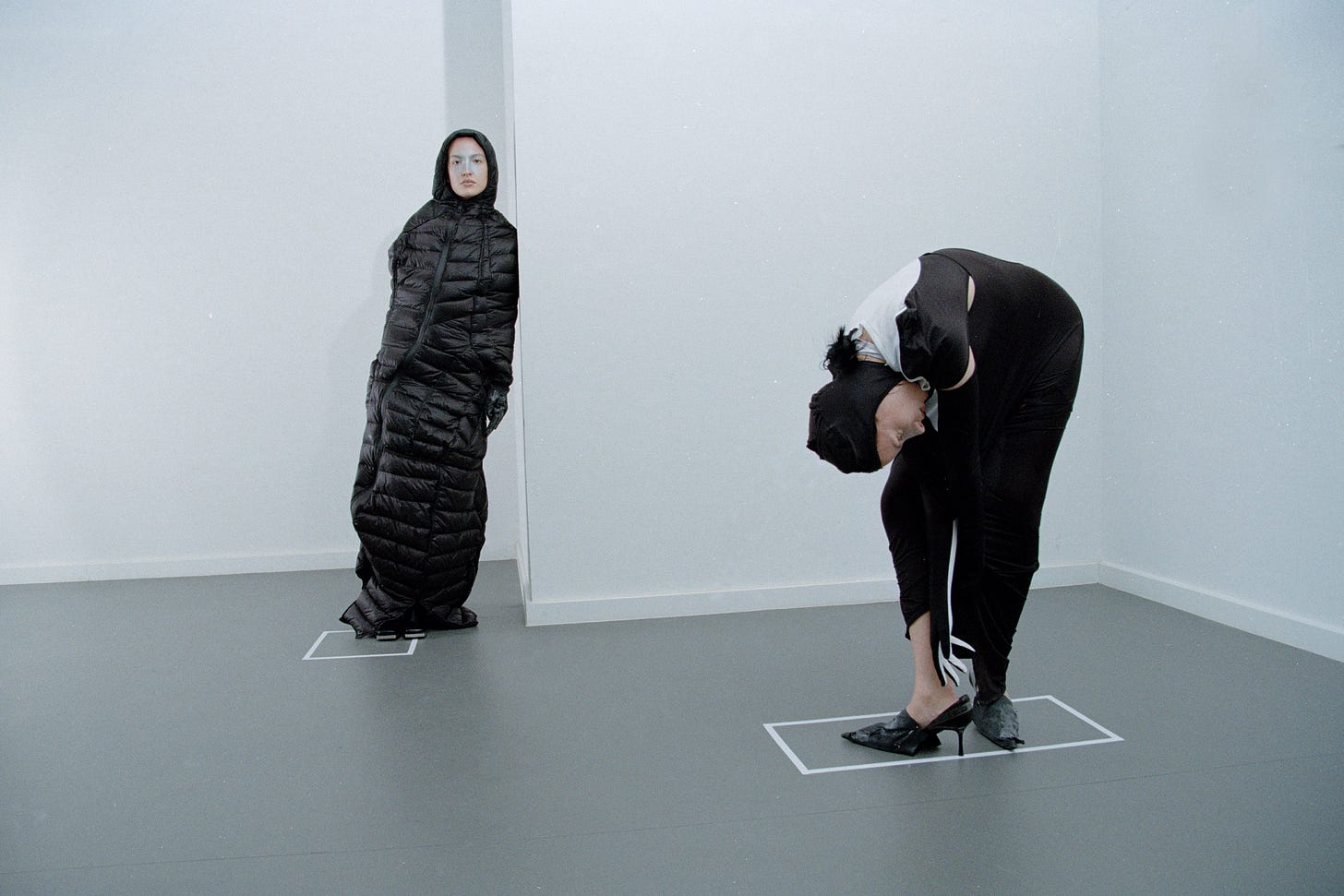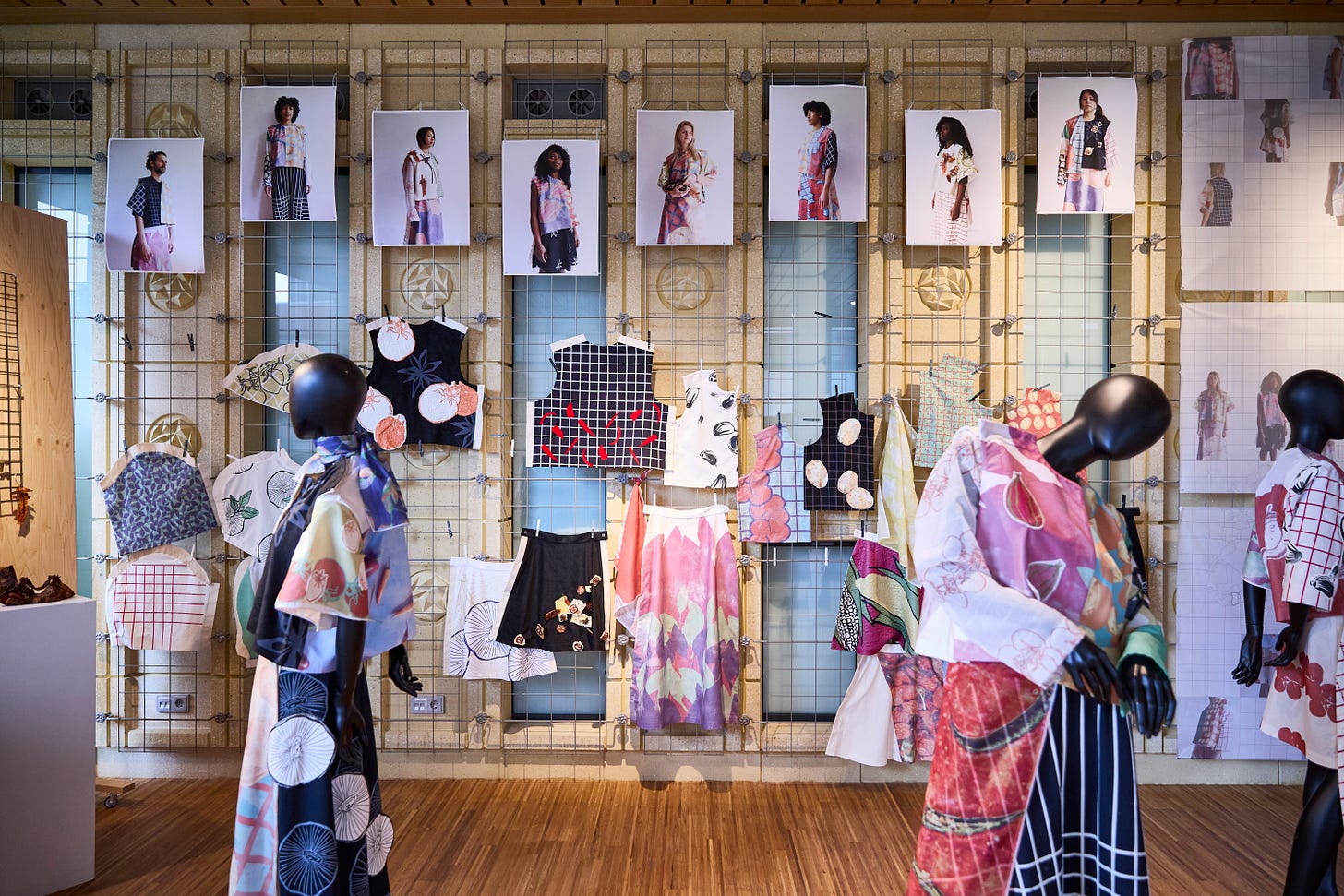Somewhere in Europe There is a FASHION CLASH
Branko Popovic Co-Founder of FASHIONCLASH Festival Believes Disrupting the Dominant Fashion Week Format Is Still an Act of Activism
It’s nice to know there is fashion life outside fashion weeks. And what a life! As we speak, more than 100 designers and artists from over 20 countries are given a stage during the 16th edition of the international and multimedia FASHIONCLASH Festival in Maastricht.
Branko Popovic co-founded the FASHIONCLASH Festival in 2009, aiming to create a platform beyond conventional fashion showcases, encouraging boundary-pushing experimentation and cross-disciplinary collaboration. The festival quickly became the alternative fashionista’s best-kept secret as it went viral among fashion connoisseurs, offering a fresh, new way to view fashion that is less focused on commerciality and more on wearable art.
Today, Popovic speaks to us about his dream vision, the obstacles young designers face, and why performative presentations are fashion’s bright future.
Can you tell us more about this year's FASHIONCLASH events?
This year, the program turned out to be quite extensive, with 13 locations spread across the town. Over 100 designers and artists from more than 20 countries were given a stage during this 16th edition. We featured exhibitions, performances, talks, workshops, and fashion film screenings, showcasing projects that explore, contextualize, and celebrate contemporary fashion culture.
The Festival kicked off with The CLASH House performance program at a unique location: the still-active Catholic church, Sint-Annakerk in Maastricht. The CLASH House serves as a showcase and development program for designers focusing on crossovers between fashion and other art disciplines, particularly performing arts. These designers explore alternative ways of creating and presenting fashion. Participants this year included Megan van Engelen, Julia Burak, SHIFT Studio, bzrkna, and Paula Dischinger. They received coaching support from theater maker Nadîja Roza Broekhart and dancer and choreographer Laisvie Andrea Ochoa.
Amarte x FASHIONCLASH is a new program-collaboration , in which we are joining forces to offer artists from various disciplines the opportunity to experiment with fashion and present new work during the festival. Five artists were selected through an open call, each with a strong desire to collaborate with a fashion designer and connect with the fashion context. They were paired with a designer to experiment collaboratively. The fantastic duos—WEEF.collective x Roumans, Mira Verhoeve x Dirk Vaessen, ULKAAN (Kaan Hiçyilmaz & Ulkuhan Akgul), Manka Menga x Katharina Spitz, and Naza Løtus x The Nightmare Disorder—created new works that push the disciplinary boundaries of fashion.
You wear many hats—from designer to director to curator. How do these roles influence each other, and how have they shaped your perspective on fashion?
That's right; I wear many different hats. Being a designer myself has helped shape my approach because I’ve experienced the challenges firsthand. I know what it’s like to be a young designer, struggling to find a niche. Designing, creating, and tailoring clothing, putting together collections, and organizing presentations have all been valuable experiences. My work with FASHIONCLASH largely grew out of a self-taught background. Only later in my career did I realize that I wasn’t just multi-tasking but multi-skilled.
Still, my roles are not all that different because, for me, the larger goal always takes precedence. My multidisciplinary background, including work in performing arts since graduating, is what helped me develop a broader view of fashion now and what it can be in the future.
Can you tell us about the vision behind FASHIONCLASH and how it has evolved since its inception? What initially inspired you to create a platform like this?
FASHIONCLASH was founded in 2009 by a group of young designers, primarily as an accessible platform to showcase their work and, secondly, as a space for experimentation within the fashion culture zeitgeist. These goals were always driven by a desire to create positive change through fashion. The first festival edition was almost an act of activism, disrupting the dominant fashion week format of the time, which was primarily influenced by Western perspectives and values.
We chose the name "FASHIONCLASH" because we thought, "Who needs another fashion week?" We needed a different stage where we could challenge and redefine the boundaries of fashion. A place where the art and culture of fashion could be celebrated.
.
FASHIONCLASH is known for supporting emerging designers and artists. Why is nurturing new talent so central to the festival? How do you approach finding these new voices?
When we started FASHIONCLASH, my colleagues and I had just graduated and faced many obstacles that made it nearly impossible to begin our careers. I started my label around the same time as FASHIONCLASH, and my colleagues and I showcased our collections at the festival.
Our experiences inspired the festival's mission, which has always resonated with young designers. When we began, our approach was considered radical. A festival focused entirely on emerging designers and artists was innovative. Social media was not yet a factor; the only way to gain exposure was to participate in an event like ours. At FASHIONCLASH, young talents could participate for free, which was unprecedented. While "young talent" has since become a buzzword, the Festival fiercely sticks to our core mission of supporting emerging designers and encouraging experimentation. Our team actively researches and scouts for talent, attending events like graduation shows and lecturing at academies to connect personally with fashion students.
You speak with many; what do you believe are the biggest challenges that young designers face today?
Each era has its advantages and challenges. Starting a business has always been tough and requires immense patience. Even established names often struggle to remain independent. Large corporations continue to hold significant power, with the wealthiest becoming even richer.
With AI and digital fashion rapidly growing, where do you see the future of fashion heading?
I am uncertain about the future, partly because I am concerned about the state of the world—climate change, polarization, and conflicts worldwide. However, I try to stay optimistic and use fashion to promote radical imagination. At the same time, I sincerely hope that AI and other technologies will foster a more sustainable, transparent, fair, and cleaner fashion industry.
What fashion trends or shifts do you find most exciting or concerning right now?
Working with young designers is consistently the most exciting aspect. The dedication we see from the new generation to foster a sustainable fashion industry is incredibly inspiring. At the forefront of innovation, digital fashion is advancing, fashion film is evolving, and fashion performances are increasingly replacing traditional shows
This is why at FASHIONCLASH, we have always supported crossovers with other art forms, especially theater and dance. Imagine that in the past, some people even dismissed our shows, saying, “What you’re presenting isn’t fashion.” But today, performative presentations are becoming more popular, with events and designers alike embracing this approach. This evolution allows fashion to be experienced more deeply, with designers’ visions and stories extending beyond mere aesthetics.






